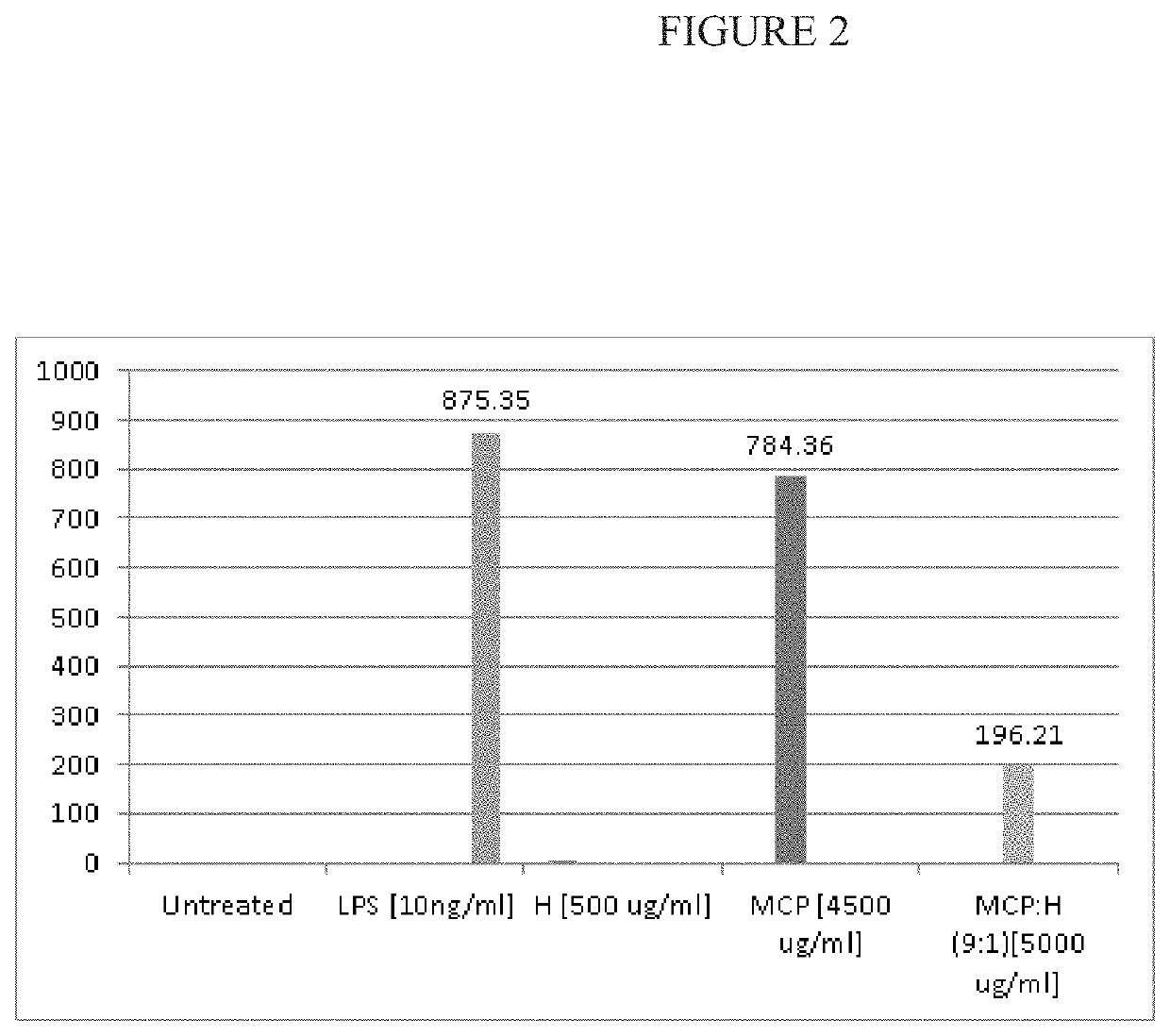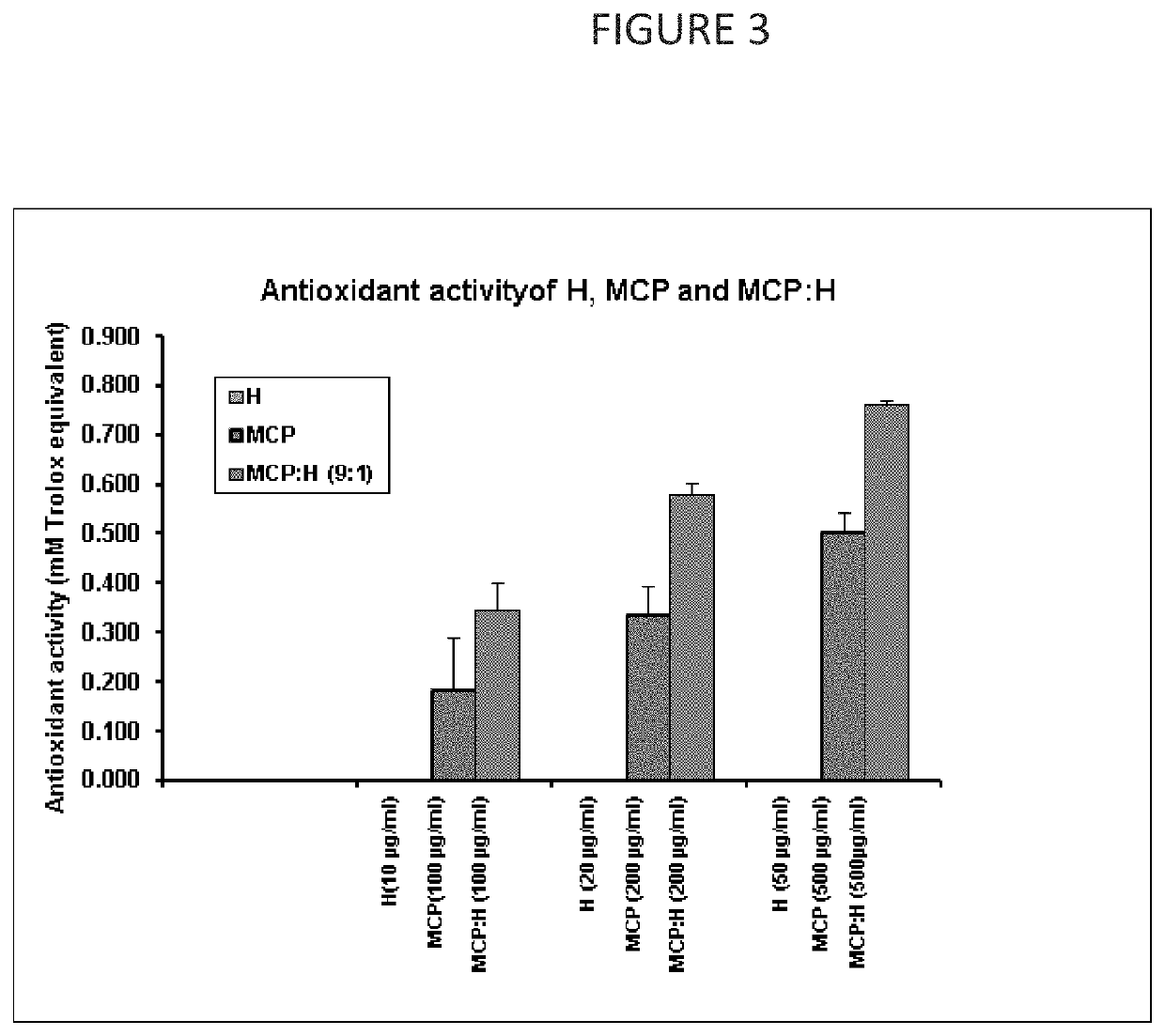Administration of synergistic amounts of modified citrus pectin and honokiol to treat inflammation and anti-oxidant needs
a technology of honokiol and modified citrus pectin, which is applied in the direction of pharmaceutical delivery mechanism, organic active ingredients, drug compositions, etc., can solve the problems of life-threatening inflammation, need for inhibition or reduction of inflammation, and difficulty in identifying and distinguishing patients, etc., to enhance the anti-inflammatory properties of honokiol, reduce direct action, and wide-ranging effects
- Summary
- Abstract
- Description
- Claims
- Application Information
AI Technical Summary
Benefits of technology
Problems solved by technology
Method used
Image
Examples
Embodiment Construction
[0039]In the inflammatory cascade, the role of TNF-α and NFκB activity is well documented, Lawrence. Cold Spring Harb Perspect Biol. December; 1(6):a001651 (2009); Baeck and Tacke. EXCLI Journal February 7; 13:67-81 (2014). TNF-α has been identified as a major mediator of inflammatory processes, one of the most dramatic being gram-negative endotoxic shock, Paul et al. Drug Discov Today August; 11(15-16):725-32 (2006). This cytokine mediates early-stage responses of inflammation by regulating the production of other cytokines, including interleukin-1 (IL-1) and IL-6. Because TNF-α is the main mediator for a number of inflammatory toxic responses to chemicals, it represents a promising target for the prevention of inflammatory toxicity. TNF-α has also been reported to induce NFκB production and this protein is inhibited by the presence of antioxidants, Osborn et al. Proc Natl Acad Sci USA. April; 86(7):2336-40 (1989); Beg et al. Mol Cell Biol. June; 13(6):3301-10 (1993). NFκB is prese...
PUM
| Property | Measurement | Unit |
|---|---|---|
| molecular weight | aaaaa | aaaaa |
| concentrations | aaaaa | aaaaa |
| concentrations | aaaaa | aaaaa |
Abstract
Description
Claims
Application Information
 Login to View More
Login to View More - R&D
- Intellectual Property
- Life Sciences
- Materials
- Tech Scout
- Unparalleled Data Quality
- Higher Quality Content
- 60% Fewer Hallucinations
Browse by: Latest US Patents, China's latest patents, Technical Efficacy Thesaurus, Application Domain, Technology Topic, Popular Technical Reports.
© 2025 PatSnap. All rights reserved.Legal|Privacy policy|Modern Slavery Act Transparency Statement|Sitemap|About US| Contact US: help@patsnap.com



